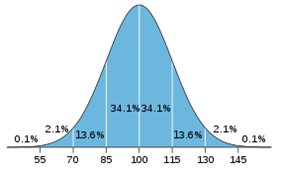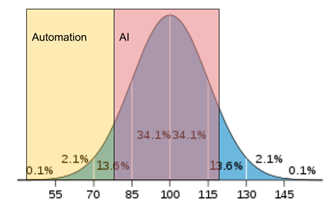Some say artificial intelligence (AI) will be the next big thing after the internet: a tool enabling new industries and improving the lives of ordinary people. Others think AI is the greatest threat to society as we know it. This article will try to explain why both parties are correct.
For people not involved in AI engineering, it can be seen as a mysterious software, capable of outsmarting the human species and maybe, one day, taking control of the world. For engineers working every day on improving AI technology, it is simply a bunch of algorithms providing more optimal solutions to existing problems. Often, the former overestimate, and the latter underestimate, the changes AI can bring.
Let’s first acknowledge the advantages that AI and robotics provide. In many cases, devices today can work in hazardous environments, preventing people from suffering work-related health issues. In the future, AI could improve the quality and safety of everyday activities like transportation or medical diagnoses. With the use of AI, we are able to improve the efficiency of different industries, such as energy consumption or shipping and delivery logistics. AI can enable new software tools, making designing new appliances easier, quicker and more efficient than ever before. It can help tackle humanity's biggest problems- like climate change and world hunger. Finally, it can accelerate the pace of civilization’s progress to a level never seen before.
The benefits are wide-ranging and clear. Now let’s look at some potentially negative side effects.
Let’s consider the example of a simple manufacturing task in a factory, such as packing products into boxes. In the past, this simple task was carried out by labourers. Nowadays, most factories use automation and robotics to perform the same work more efficiently, reliably and in a cost effective way. Workers had to either change or improve their skills to stay productive in the job market or otherwise become unemployed. On the other hand, the owners of these means of production have increased their profit margins by employing less staff.
Today, being a skilled worker makes us a useful member of society and gives us a feeling of financial and social security. By knowing that the service we provide is needed by others, we feel independent, confident and secure.
As AI matures and evolves, it will become more capable and, as a result, able to replace jobs requiring higher and more sophisticated skills and experience.
The graph on the right represents the distribution of IQs in society. In this context, we can think of it in terms of the skills people can contribute to the job market. Looking at the bell shape of the curve, we can observe that the vast majority of the population is located in the middle of the curve.

At the lower end of the IQ spectrum are people who have most likely already been affected by automation and IT systems. We can observe that those people comprise a relatively low proportion of the overall population. But as AI becomes more sophisticated, it also becomes suitable for more and more advanced tasks. And as we can see, those tasks are currently being occupied by a bigger proportion of the population. The number of people impacted by AI is therefore going to be much larger than the quantities affected by simple automation so far.
People on the right side of the curve, performing the most cognitively demanding tasks, are likely to be affected by AI last.

Self-driving cars are going to reduce the need for truck, bus and taxi drivers; AI in medical diagnosis will reduce the demand for general practitioner doctors; computer aided design software will reduce the headcount in engineering positions; AI accelerated help desks are going to lower the need for customer service employees, etc.
All the people displaced from their existing positions are going to choose from four main available options:
- Increase qualifications in order to remain competitive in the market
- Retrain in industries not affected by AI
- Accept lower salaries for the same work
- Fall back on social security unemployment benefits
So far, the forces offsetting the effects of automation have been human creativity and innovation in creating new industries that could absorb the released labour force. But as technology advances and AI becomes more capable than ever before, it could affect quantities of people orders of magnitudes larger than so far.
Looking to the future, here are some questions that we will look to answer:
- Is human creativity and innovation going to keep creating new industries fast enough to accommodate displaced labour?
- How should the socioeconomic system change to reduce the wealth inequality brought about by increased efficiency?
- How can we ensure AI is used in an ethical way?
- How can the benefits of AI accelerated industries be better shared among society?
- How can we leverage AI in order to increase the equality of opportunity for people?
With every powerful and appealing technology comes a range of risks to a world order we are used to. Forecasting the impact such a disruptive invention as AI can have on our lives is crucial to be prepared and adjust our socioeconomic systems in order to limit negative consequences for the livelihoods of ordinary people.